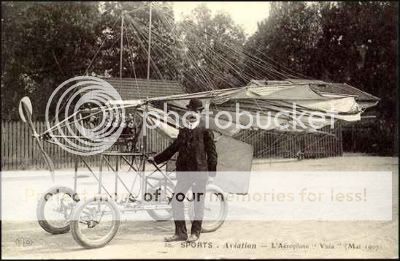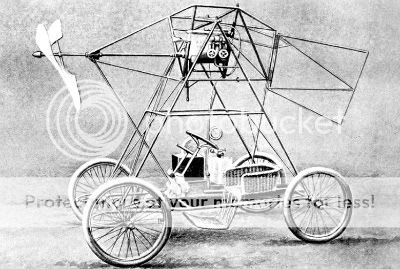The man who invented the plane14:23 Jun 07 2009
Times Read: 952
Traian Vuia (pronounced [traˈjan ˈvuja]; August 17, 1872 - September 3, 1950) was a Romanian inventor, who designed, built and flew the first self-propelling heavier-than-air aircraft in Europe, in 1906.

After the graduation of high-school in Lugoj in 1892, he enrolled in the Polytechnic University of Budapest, School of Mechanics where he got his engineering diploma. He then joined the Faculty of Law in Budapest. In May, 1901 he was awarded a Ph.D. degree in Law by the Faculty of Law in Budapest with the thesis "Military and Industry, State and Contract regime".
After graduation, he returned to Lugoj, where he continued studying the problem of human flight and he designed his first flying machine which he called the airplane-car and tried to build this machine, but due to financial constraints, decided to go to Paris, in July, 1902, where he thought he'll find someone interested in financing his project, starting with balloon enthusiasts, but many believed that a flying machine with a density greater than air's could not fly. He then went to Victor Tatin, a known theoretician and experimentator who built an aeromodel in 1879.
Tatin was immediately interested in Vuia's project, but also tried to persuade him that there was nothing he could do, since Vuia's project did not have a suitable engine and it would not be stable enough. But Vuia continued to trust in his project, so he sent it to the Académie des Sciences of Paris on February 16, 1903, presenting the possibility of flying with a heavier-than-air mechanical machine and his procedure for taking off, but it was rejected for being utopian, adding the comments:
The problem of flight with a machine which weighs more than air can not be solved and it is only a dream.
In spite of all these refusals, Vuia did not give up and applied for a patent granted on August 17, 1903 and published on October 16, 1903. Vuia begun to build the flying machine in the winter of 1902–1903. He encountered many difficulties, the most important being of financial nature, but he succeeded in overcoming them. In the autumn of 1904, he began building the engine, also his own invention. In 1904, he got a patent for his invention in the United Kingdom. This aircraft was called "Traian Vuia 1" and it was a single-plane airplane with a high-wing, which was completely built in December 1905. He found a place in Montesson, near Paris, where he could test his airplane, the first experiments started in 1905, at first he used the machine only as a car, without the wings mounted on it, so he could gather experience in driving it, then on March 18, 1906 "Vuia I" was set to take off. He accelerated and after about 50 meters, the plane left the soil and flew at about one meter in height for about 12 meters then the propeller stopped and the aircraft landed.

Many newspapers in France, the US, and the United Kingdom wrote about the first man to fly with a heavier-than-air machine with their own takeoff systems, propulsion units and landing gear. The thing that has been emphasized ever since about Vuia's achievement, is that his machine was able to take off on a flat surface "only by on-board means", without any "outside assistance", be it an incline, rails, a catapult, etc.
For more pictures of his plane
click here.








COMMENTS
-